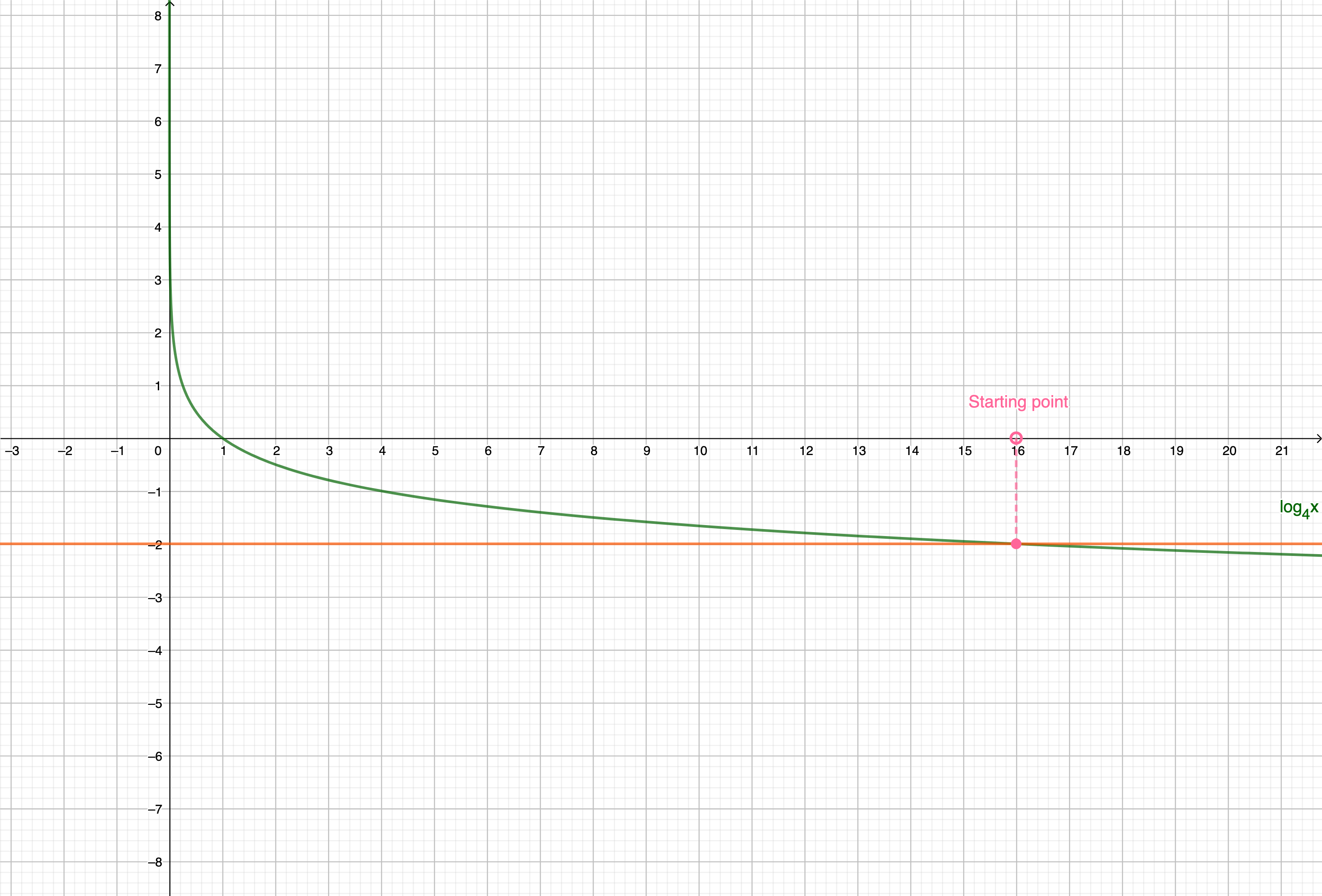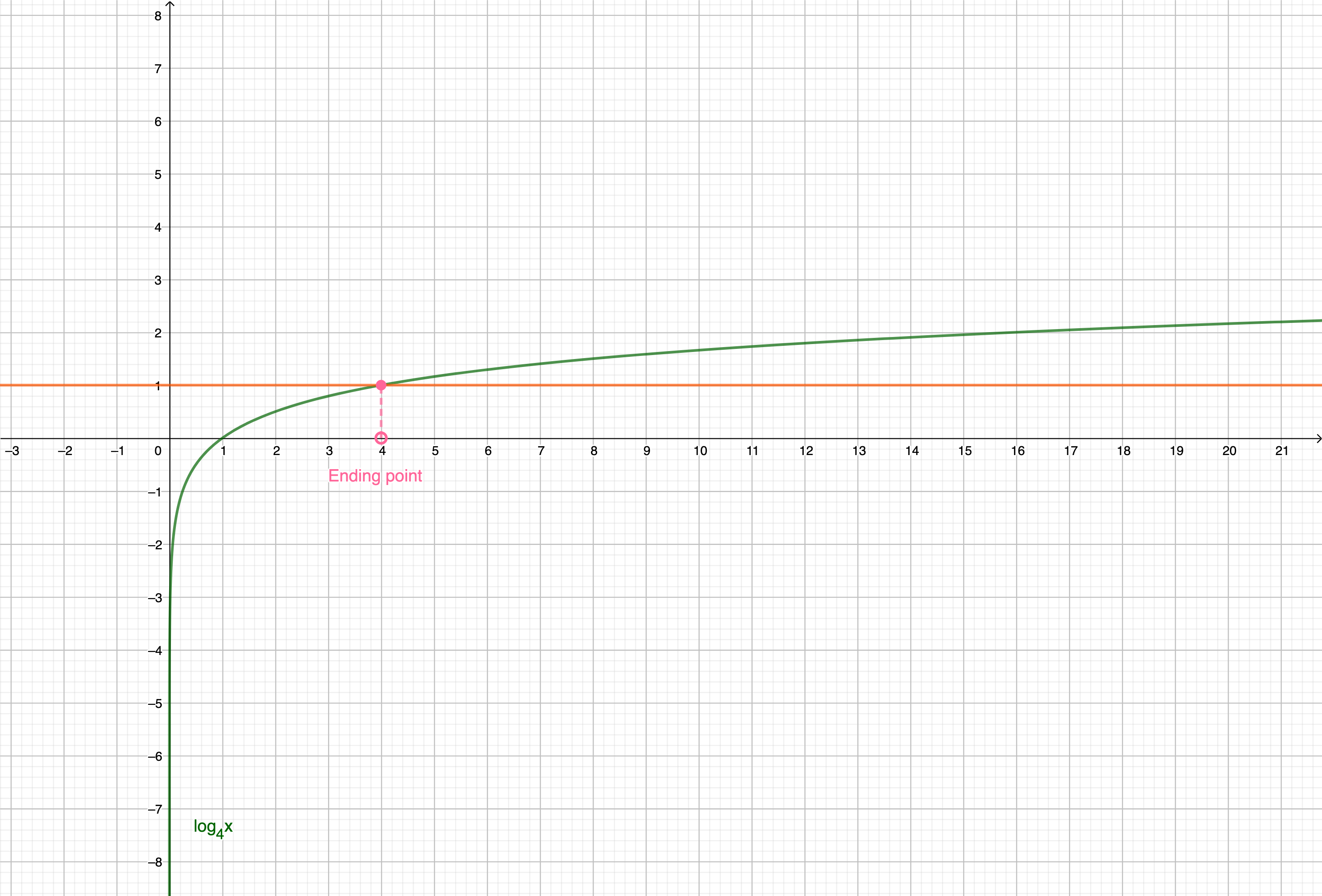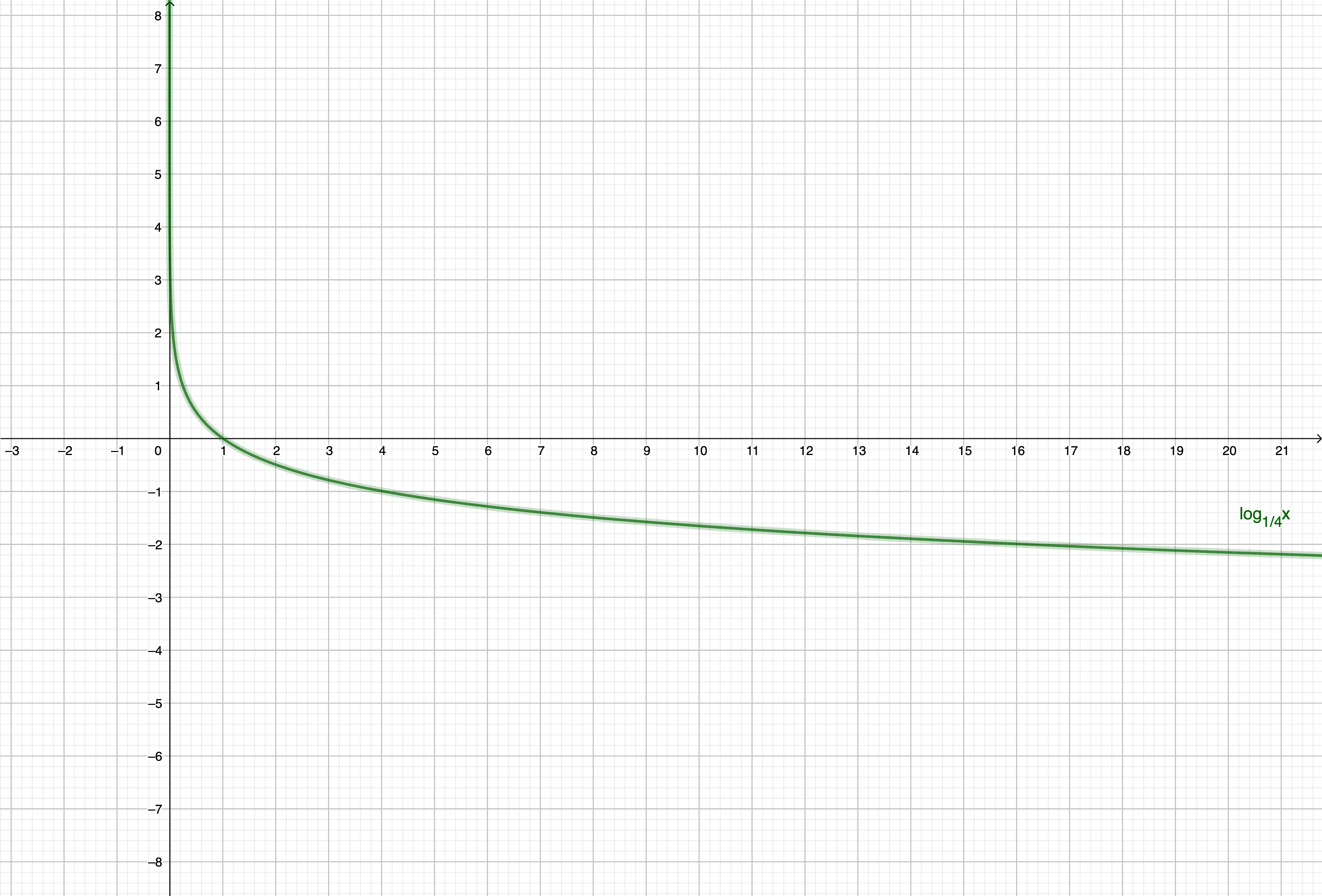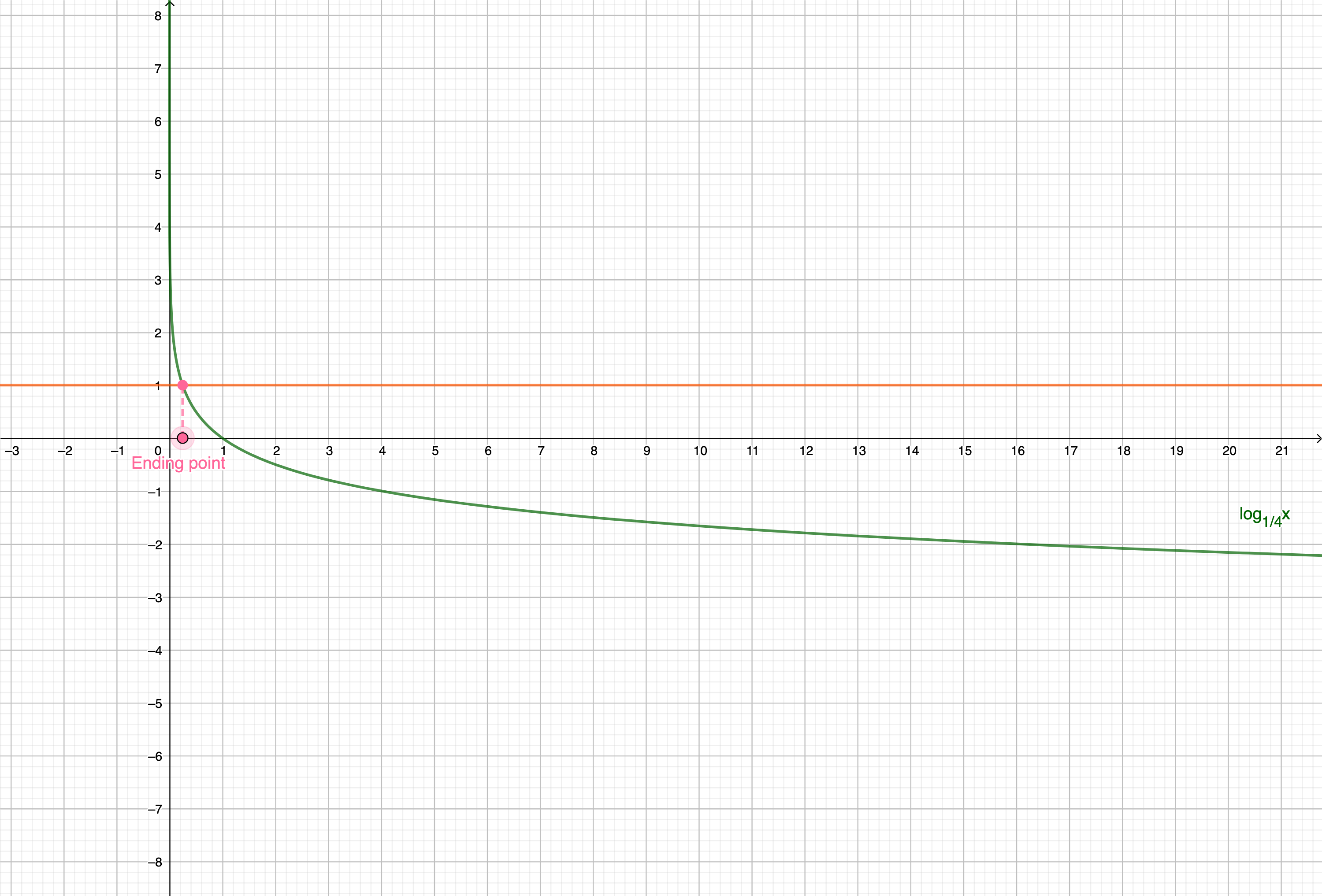-
 MATHEMATICS BEHIND THE TEXTBOOKSWHY AND HOW DOES VARIOUS FORMULAS WORK?
MATHEMATICS BEHIND THE TEXTBOOKSWHY AND HOW DOES VARIOUS FORMULAS WORK?
Logarithmic Inequalities: problem I $$\log_{\frac{1}{4}}x < 1 $$
$$\log_{\frac{1}{4}}x < 1 \Leftrightarrow x \in (\frac{1}{4},\infty) $$
Solution 1
Substitute number on the right side by a logarithm, change inequality, and then ignore logarithms on both sides.1. Substitute number on the right side by a logarithm with the base 1/4.
Do you remember definition of a logarithm ?
Logarithm itself just finds the power to which the base must be raised to produce some given number :

In our case, we have the base (1/4), we have the power (1) and we are searching for a "given number". The question is then slightly changed : If I power our base (1/4) to number 1, what number do I get?

If you need more help, this link may help you or google "definition of a logarithmic function ".
$$\log_{\frac{1}{4}}x < \log_{\frac{1}{4}}\frac{1}{4} $$
2. Change inequality and ignore logarithms.
Do you know why we can use this "trick"?.
It is crutial to understand this step because it sometimes works and sometimes does not! If you are not sure, just follow the "help" button.
1. Look at the graph of a logarithmic function with the base 1/4.
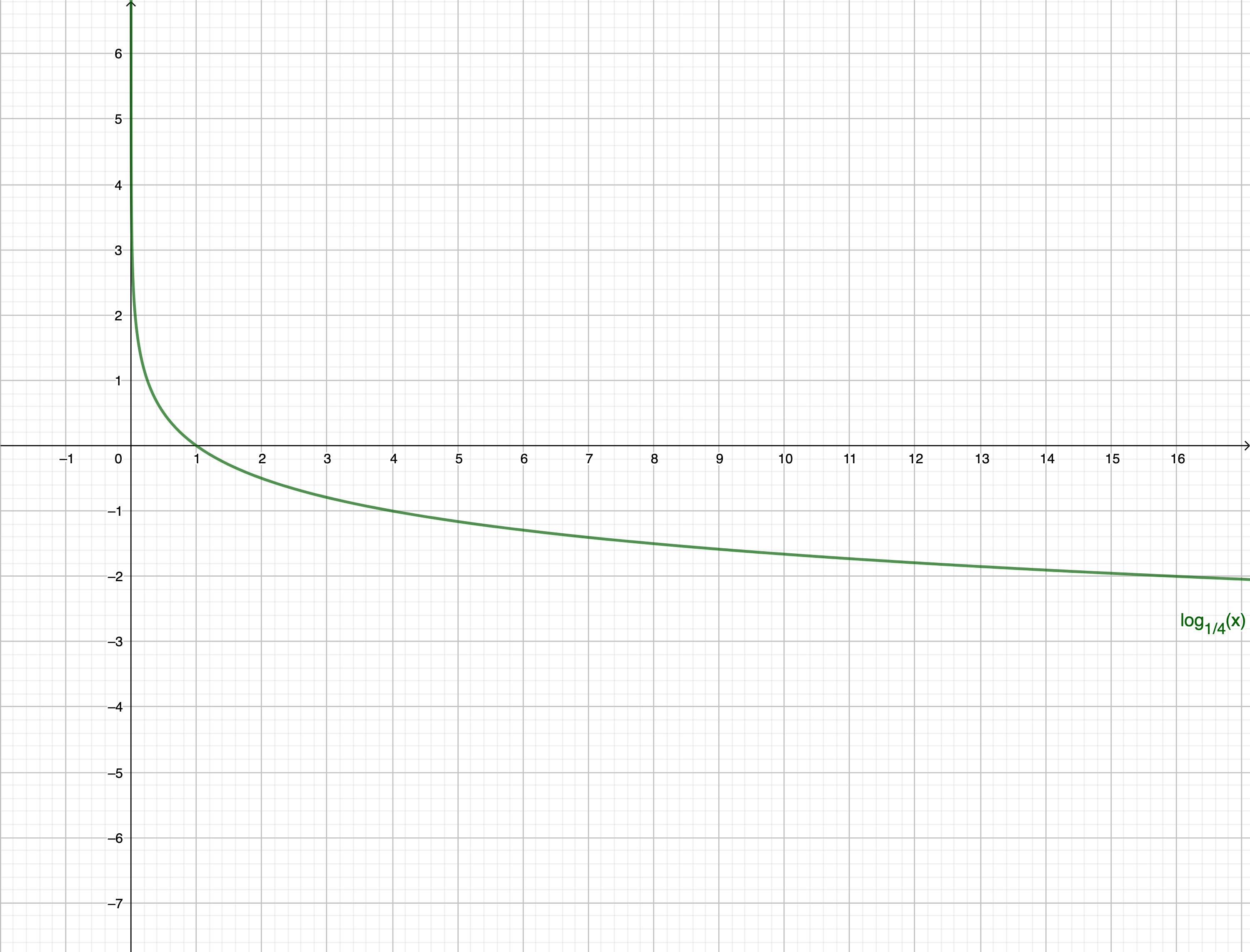
Try to create the graph by yourself. You can do it in a classic way, using just a pen and a paper, or you also can use an online editor (simple and free one is e.g. GeoGebra ). If you need more help, this link may help you or google "basic graph of a logarithmic function".
2. Pick up any two points on your graph.
Example 1:
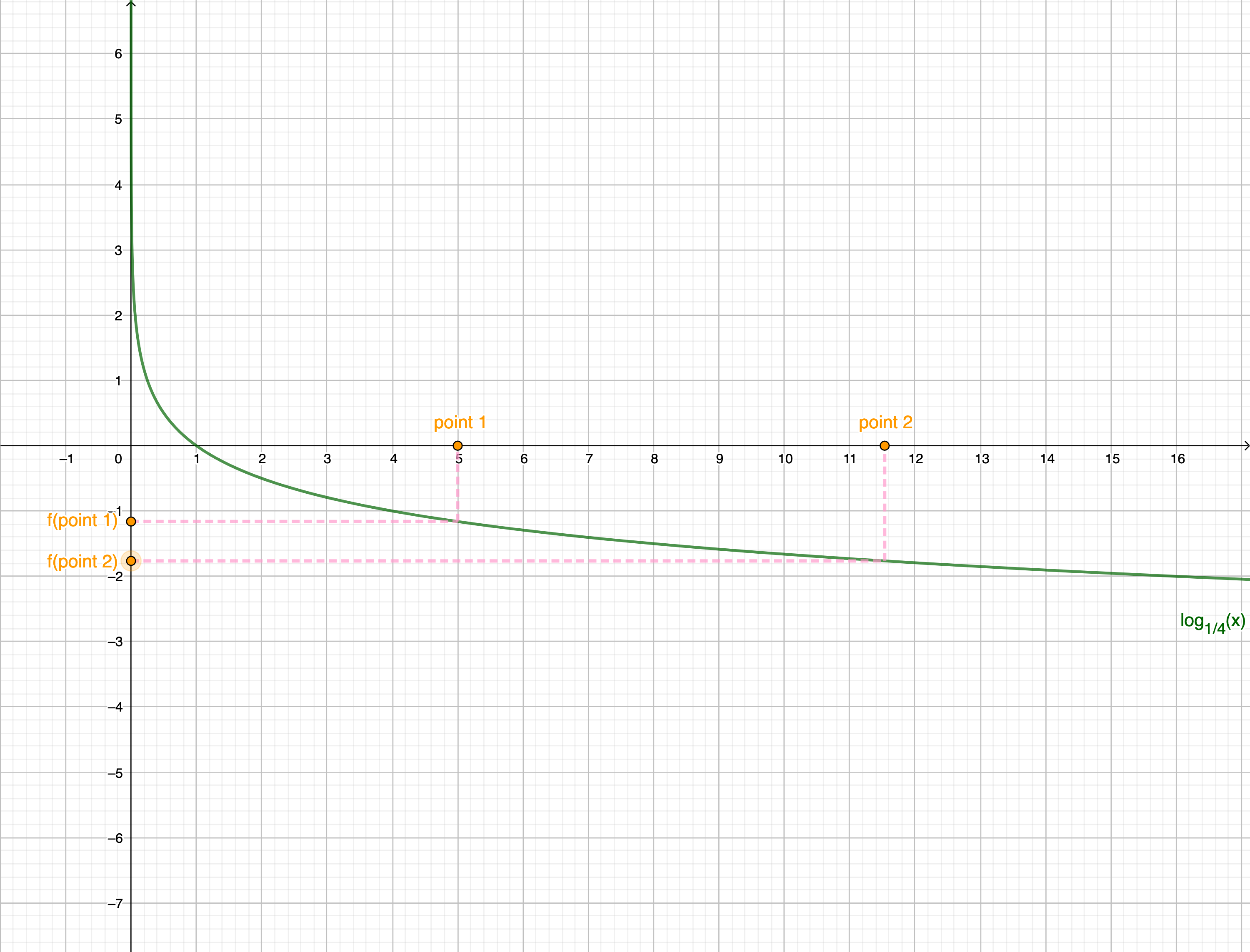
Example 2:
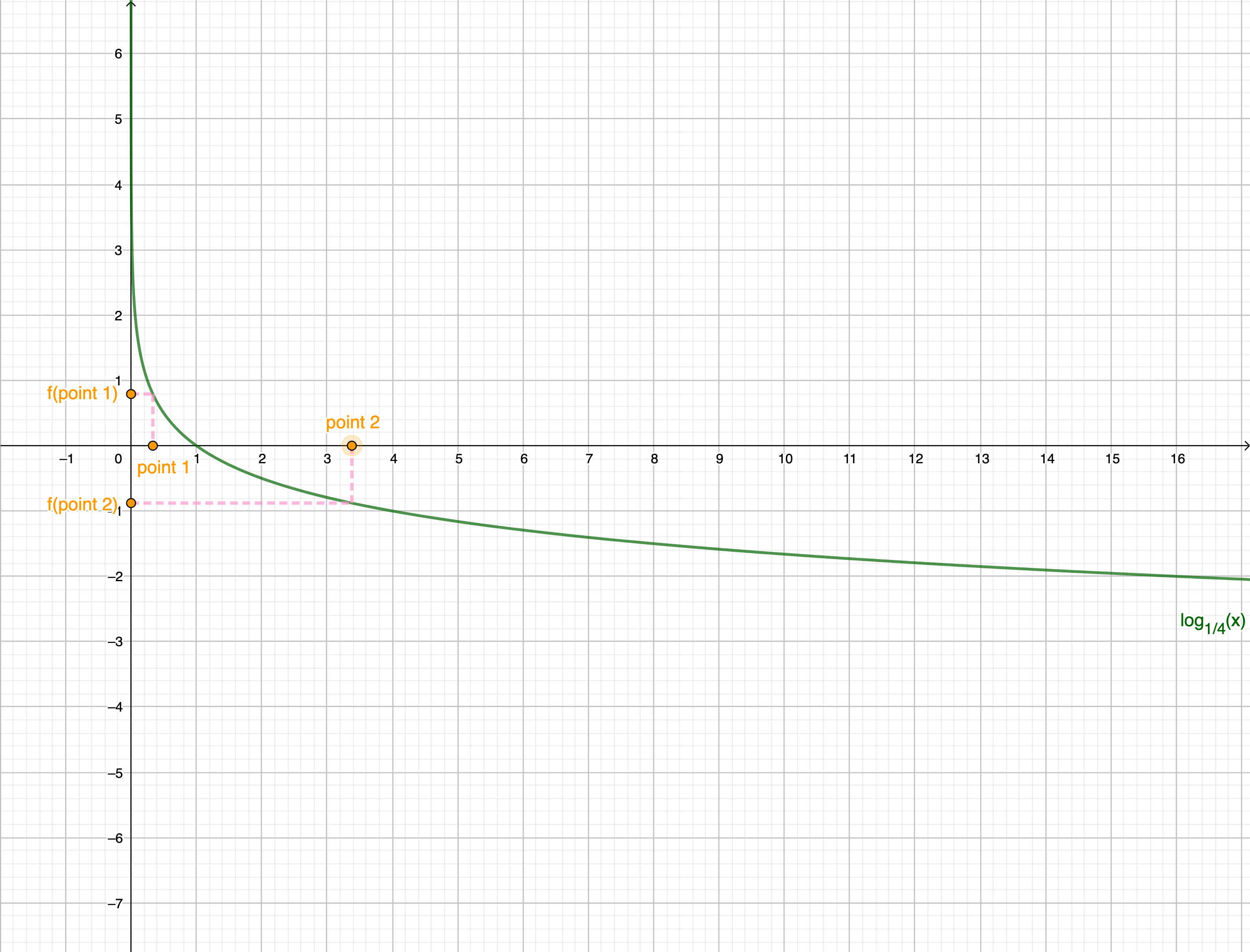
3. Now, think about the relationship between these points and its functional values.
If the functional value in the point 1 is greated than the functional value in the point 2, how is the relation between the point 1 and the point 2?

4. "Functional value" is just the different name for a logarithm (in this our case).

Looking at this relation we can see, that if we have the logarithmic inequality of two logarithms with the same base, we do not have to work with logarithms. It is enough to work with "the points". In other workds, we just have to change the inequality and then we can ignore logarithms.
5. Is the relation same for any logarithm ?
Try to figure it out by yourself. Think about different logarithms. Take e.g. logarithm with the base 4. How does its graph look like? How is the relationship between two points and its functional values at this graph?
No! It depends on the base of a logarithm.
Look at the graph of a logarithm with the base 4:
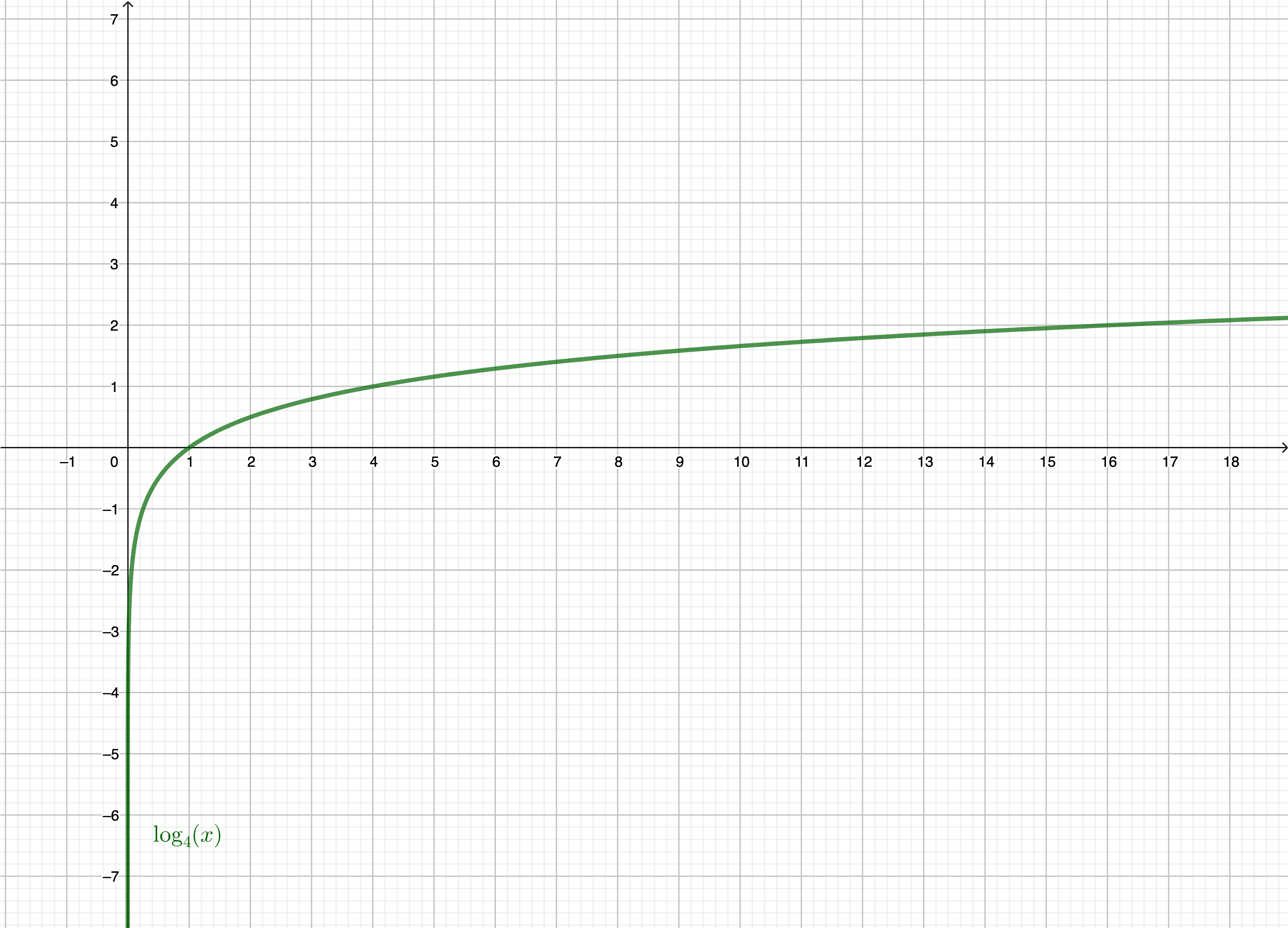
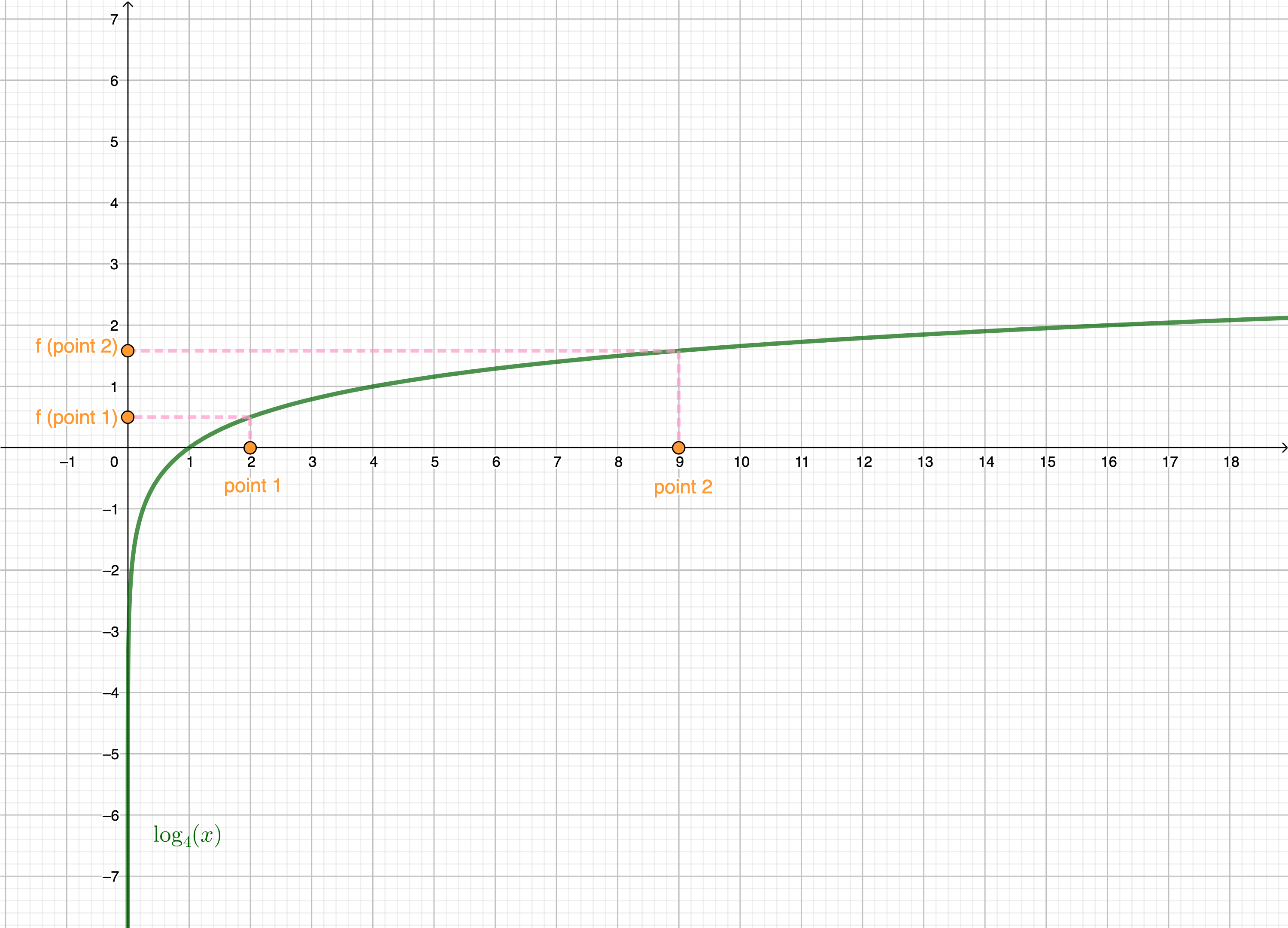

6.Conclusion, your own "tricks" that always work :)
Remember, always menas only if your inequlity has just logarithms with the same base on both sides!
Trick 1 : If the base of your logarithm is greater than 1, you can ignore logarithms.
Trick 2 : If the base of your logarithm is lower than 1, you have to change inequality and then you can ignore logarithms.
$$ x > \frac{1}{4} $$
3. Voila! You have a solution. Just summarize it through the interval.

$$ x \in (\frac{1}{4},\infty) $$
4. Is my solution correct?
yes, it is
5. Challenge Yourself! Try to solve similar problems


